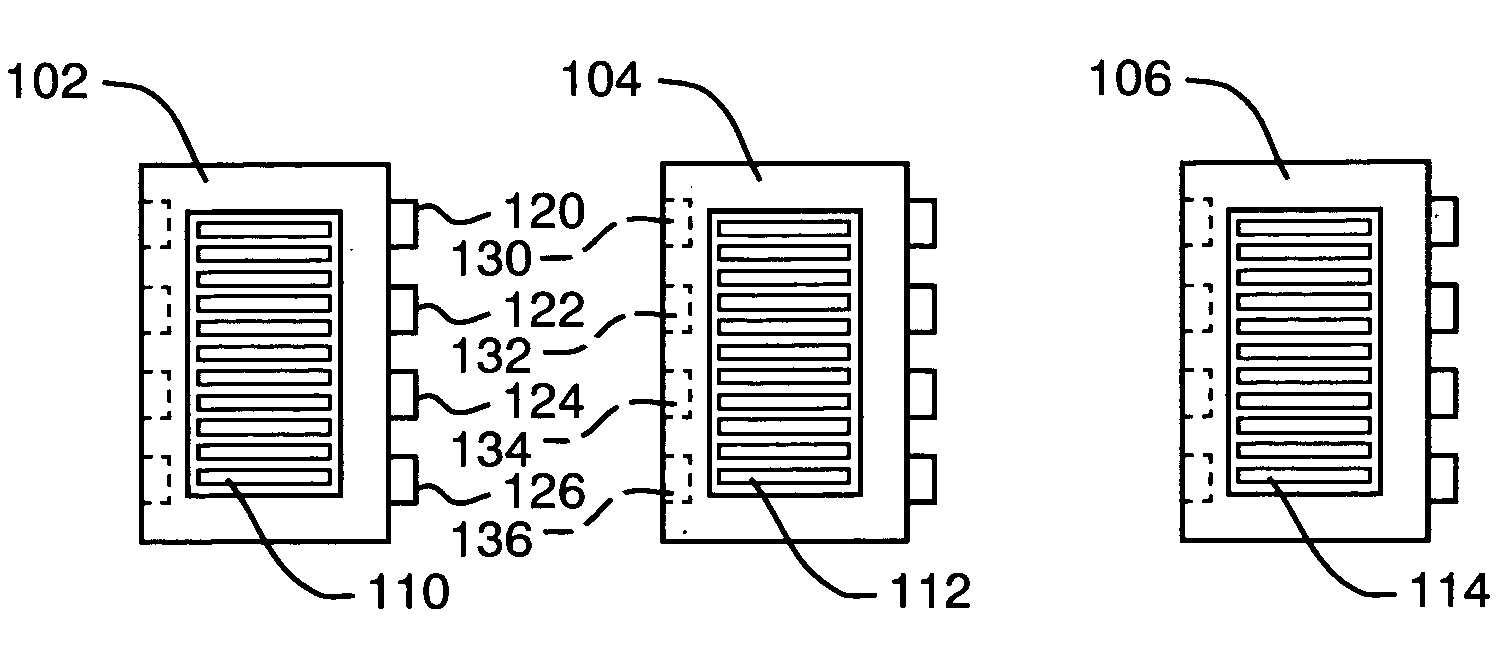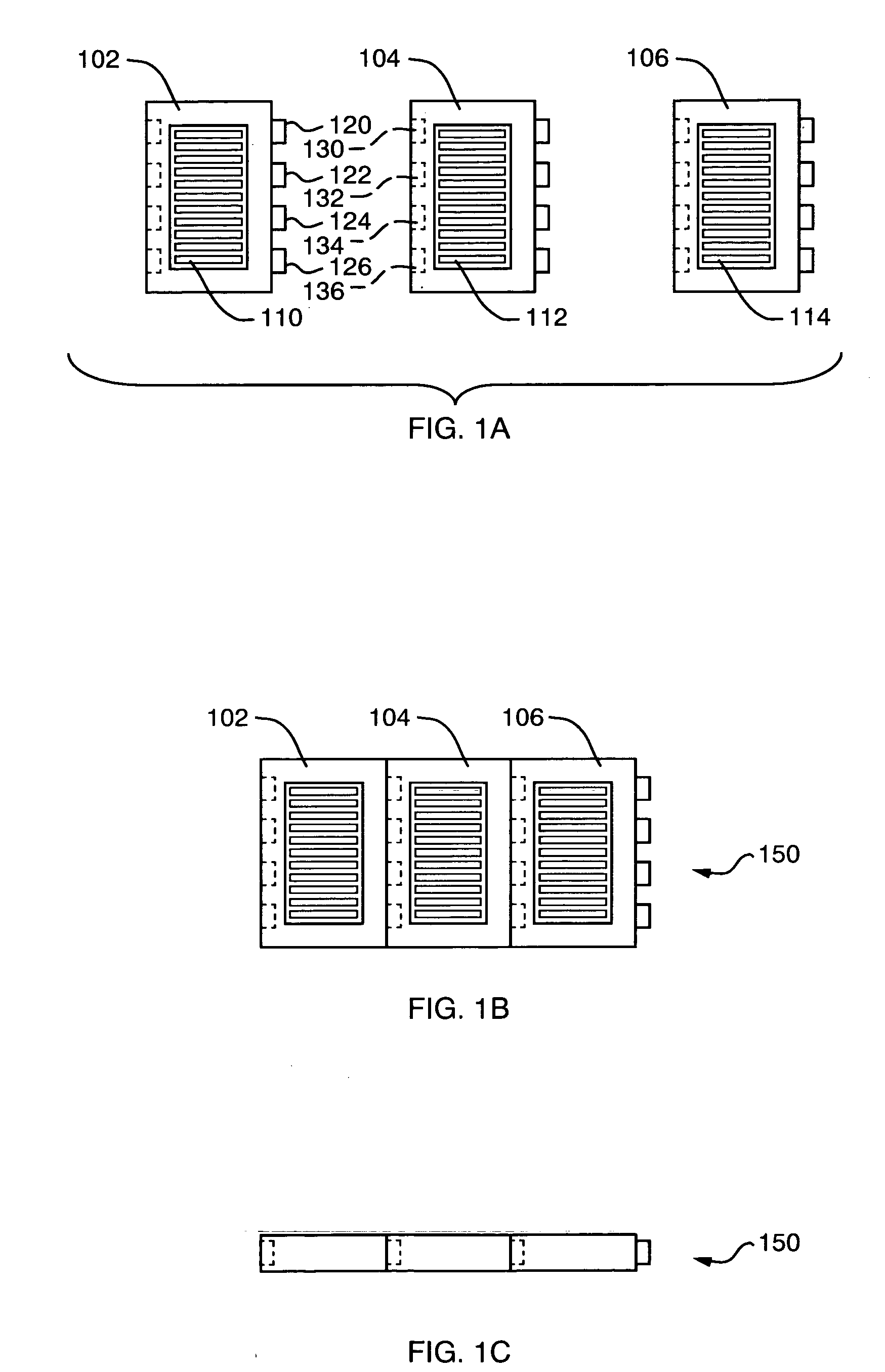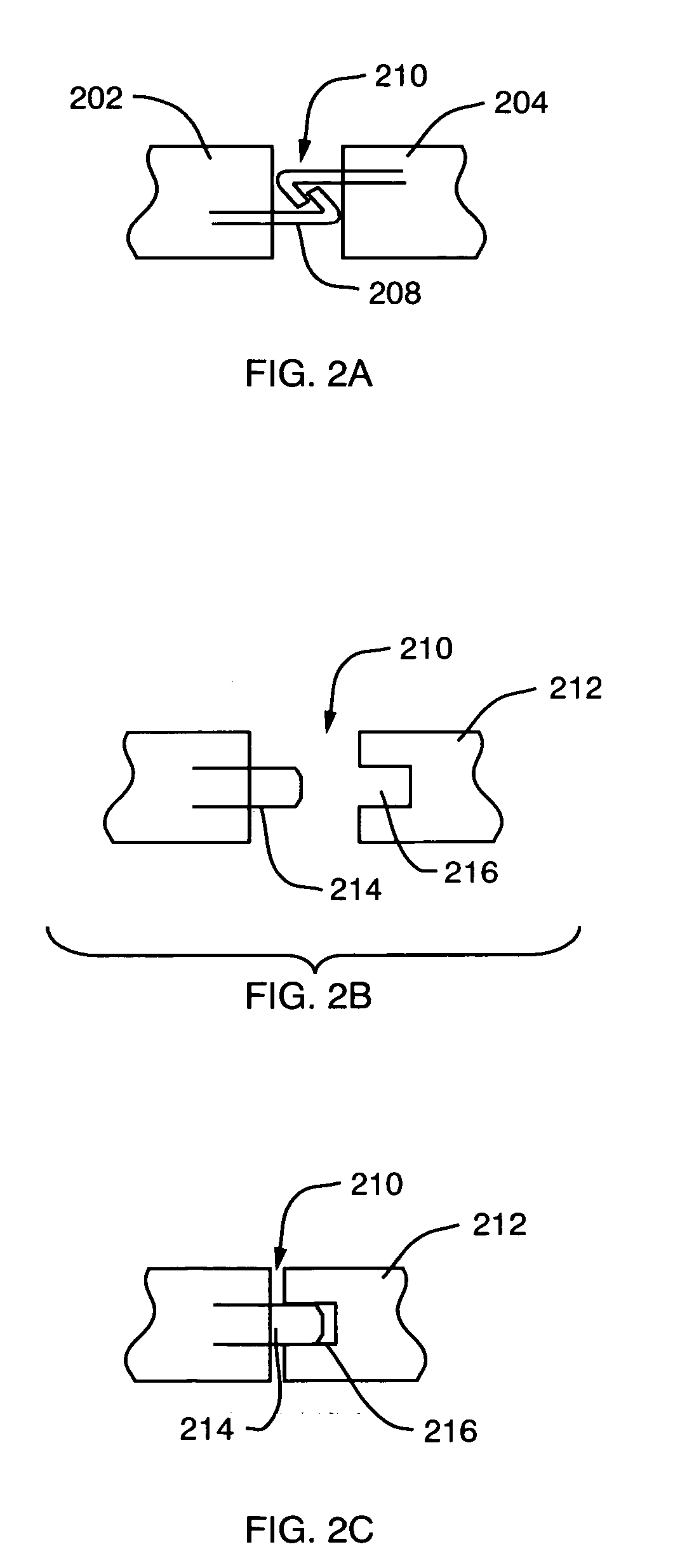Modular connections in a DMFC array
- Summary
- Abstract
- Description
- Claims
- Application Information
AI Technical Summary
Benefits of technology
Problems solved by technology
Method used
Image
Examples
embodiment
[0061] Carrier Embodiment
[0062] As noted herein above, another category of modular DMFC arrays incorporates individual fuel cells that fit in or attach to a type of underlying carrier component that provides structural stability and / or electrical conductivity. The carrier can be a rigid plate, such as an appropriate plastic or fiberglass plate, or it may be a pliable material, such as a fabric or non-woven material. Though illustrated herein as being planar, a rigid carrier component may take any number of shapes as is necessary or desirable for a particular application including, but not limited to a curvilinear form. By way of background, FIG. 5A illustrates an individual fuel cell 500 that is one building block of an array such as the array 550 of FIG. 5B. The array 550 of FIG. 5B includes the fuel cells 504 through 508. The fuel cells 504 through 508 are attached to a carrier component 560. Multiple cells in the carrier 560 are illustrated in FIG. 5C. In order to attach the fuel...
PUM
 Login to View More
Login to View More Abstract
Description
Claims
Application Information
 Login to View More
Login to View More - R&D
- Intellectual Property
- Life Sciences
- Materials
- Tech Scout
- Unparalleled Data Quality
- Higher Quality Content
- 60% Fewer Hallucinations
Browse by: Latest US Patents, China's latest patents, Technical Efficacy Thesaurus, Application Domain, Technology Topic, Popular Technical Reports.
© 2025 PatSnap. All rights reserved.Legal|Privacy policy|Modern Slavery Act Transparency Statement|Sitemap|About US| Contact US: help@patsnap.com



